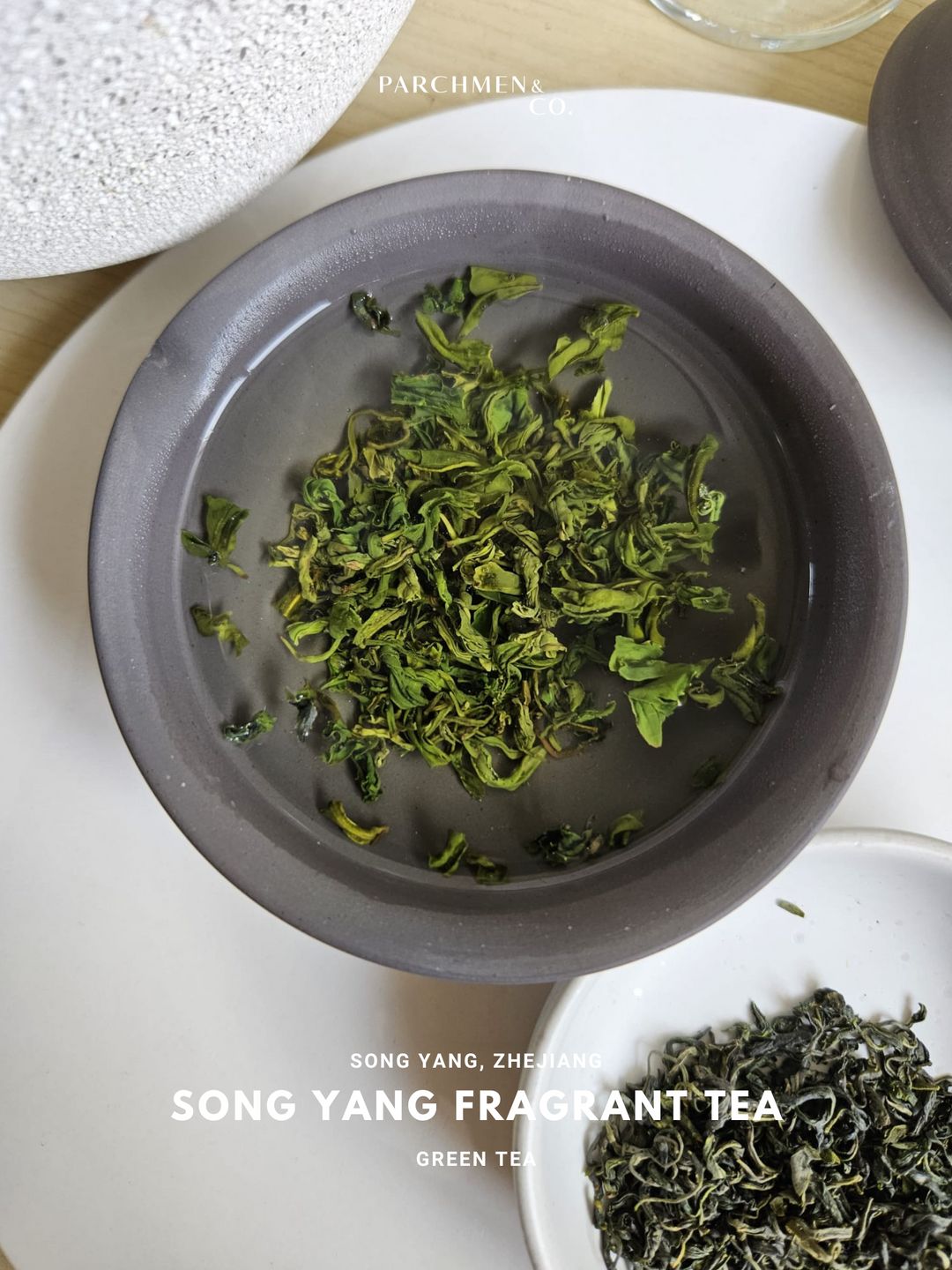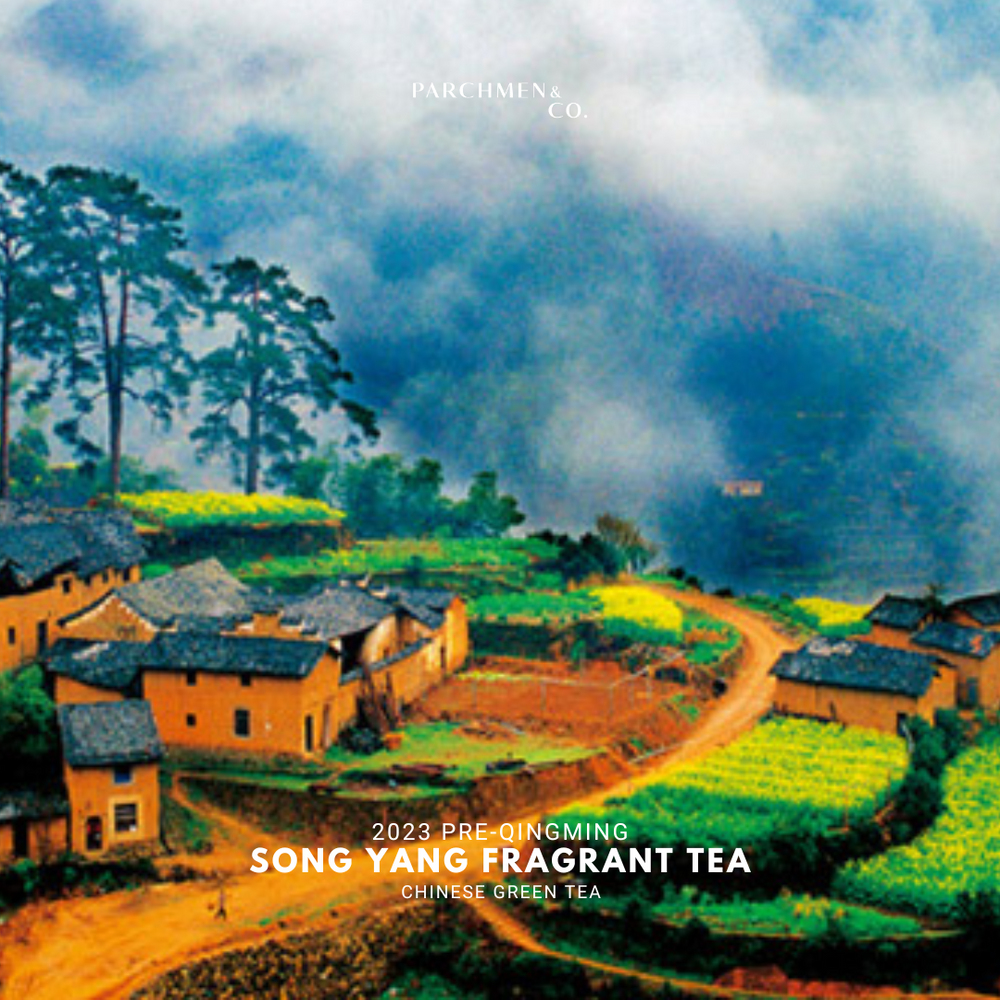2023 Pre-Qingming Song Yang Fragrant Tea 松阳香茶
- In stock, ready to ship
- Inventory on the way
Tea in China has so much history and culture it is never complete to introduce the tea without mentioning the place. Song Yang county in Zhejiang province is known to be the last surviving town that carries the distant memory of classical ancient China in Jiangnan (south of Yangtze River). This mighty river is not only a geographical line, but also a cultural dividing line between the south and north of China. The earliest records reveal that Song Yang was first established in CE 199 during the Han dynasty. Tea making started slightly later, during the era of the Three Kingdoms. It stands today with the same name and forgotten in time. 80% of the county is covered in forest and away from pollution. With pristine water sources, the tea is grown at the upstream of the Ou River in the county.
Song Yang has a long history in tea making, and even noted by Su Dongbo, the famed poet from Song dynasty. Unfortunately, culture and art oftentimes give way to political struggles and wars, and the local tea making techniques were eroded by time. Today, the technique underwent reinvention by adopting an ancient Tang dynasty style of tea processing for Mao Shan Saintly Tea (卯山仙茶). It further uses tea cultivars introduced from other parts of China and Zhejiang province where it belongs to. The Silver Monkey (松阳银猴) is full of downy tips and is the lead tea in this series, while the Fragrant Tea (松阳香茶) is a later harvest with the downy tips. It is called a fragrant tea because of the high nuttiness in the dry fragrance, followed by berry, currant notes and yellow blossoms in the brew. This unusual profile is a result of additional steps taken during tea processing.
This tea undergoes pan-frying by hand. By putting the greens in the pan numerous times and varying the speed, time and temperature at the different passes, the tea craftsman controls its chemical reactions to highlight its nutty aroma while losing the characteristic green tea greenness. The repeated frying makes it lose the white downy hair but its high aroma more than compensate for its lack in classy appearance.
Our tea is picked 1 bud and 2 leaves before Qingming (5th April 2023), meaning that it is an early picking and highly sought after. The shape is tiny, greyish green and tightly rolled.
Brew Flavour
We are brewing this tea in our Parchmen Glass Gaiwan, using 3g of tea to 130ml of 75°C distilled water for 20 seconds. Pour the water gently into the gaiwan and once filled to the sleeve (about 130 ml in about 20 sec), pour out the tea immediately. Brew colour is thick yellowish. The initial brew aroma is cream and roasted cashew nuts, slowly turning into chestnut and carnation flowers as it cools. Throughout the brew, berry and currant notes are prevalent. Tea is thick and smooth, almost juicy, with a hint of sugar cane sweetness. It is playful in the mouth without any sharp and astringent aftertaste.
Enjoy a fresh green tea while it lasts. This tea can be brewed twice.















